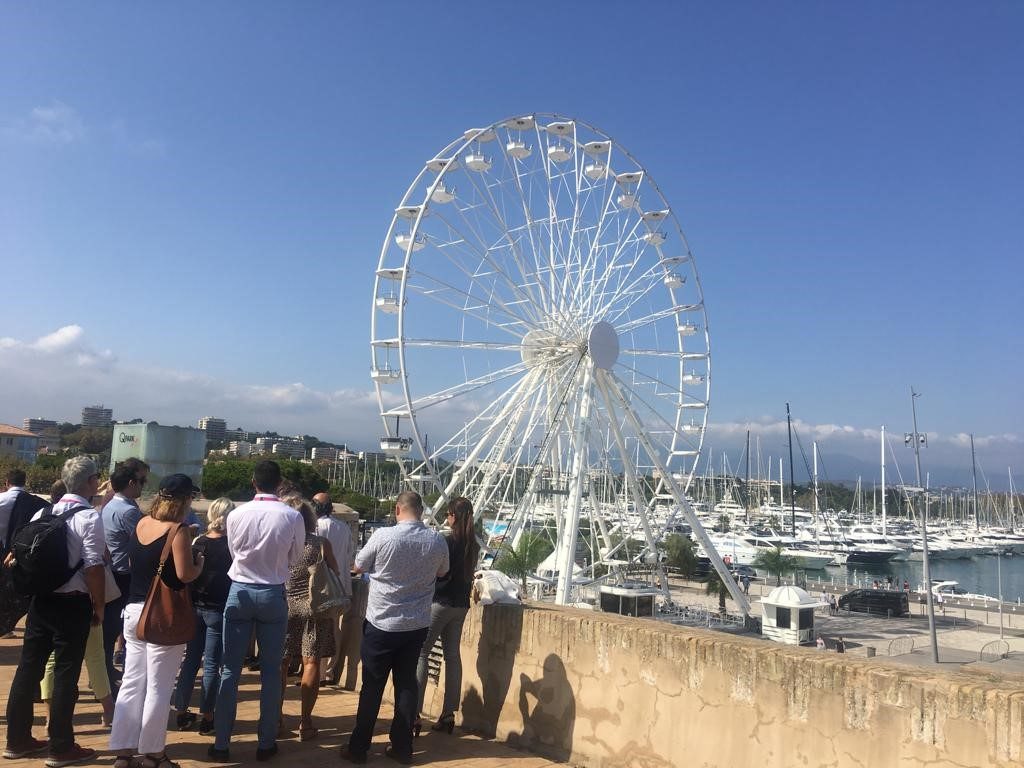Responding to an invitation from the Nice Côte d’Azur Metropolis, a representative of the Mediterranean Urban Planners Network travelled to Antibes on Tuesday 17 September for a “Ports and Heritage” workshop organised by the GrIT Access program (Interreg Maritimo). This trip is justified on the one hand by the proximity of interest of the planned theme to that followed by the Network in 2019 (city-port relationship in the Mediterranean) and the expected stakeholders, in particular the Network’s partners (AIVP and Porto Antico de Genoa). On the other hand, the capacity of the Urban Planners Network to integrate medium-size ports dedicated to pleasure boating (which is, in fact, the majority of ports in the South Region) into its theme had also been highlighted.
From the three round tables that follow one another in the morning, two strong ideas emerge: first, that of preserving territorial identity in the face of changes and developments in port areas. This identity is firmly rooted in Antibes, with the presence of an emblematic historic building, “le Fort Carré”. The second is expressed through the ability of the various stakeholders in the port territory (port authorities, customs, local authorities, fishermen, pleasure boaters, tourist office and local residents) to dialogue and explain the developments and developments that make it possible to develop public and shared spaces, particularly within the resulting tool: the “Port Center”.
At the beginning of these debates, it is specified that the notion of heritage applies as much to an identity (a history, a geography and a future) as to places. To illustrate this reflection, the first two invited speakers are architects belonging to Bâtiments de France, Anna Pellegrini and Philippe Prost. They recall that, beyond identity, the work consists in promoting a mix with the city, widening public space, returning it to pedestrians and taking into account the maritime approach to the port (what we see when we arrive by boat..: On this point, it should be pointed out that the City of Antibes is the first European city to receive[in terms of tonnage capacity] pleasure boats, the largest ones coming to moor on a quay called the “Quai des Milliardaires”[ex-” Quai des Pétroliers “]). The ambition here is urban planning, landscaping, architecture but also commercial and industrial. It is therefore fundamental, in order to continue to write the history of this port, to precisely describe its uses, the port project remaining collective and the integration of the port into the city remaining a real challenge.
As an extension of these initial exchanges, which promote a shift towards the collective, the next three speakers will present the Port Centers and explain their added value. In his introduction, Mr Olivier Lemaire, Director General of AIVP, puts into context the general movements that animate all the world’s ports: the growing questioning of citizens and residents concerning the compatibility of port activities and the good life in the city, the alignment with the heritage and identity of the port city, the rise in innovative approaches and new technologies, particularly energy, environmental and landscape technologies, all linked to a strong development of maritime activity. Olivier Lemaire points out that AIVP participated in the construction of the Port Center approach and is at the origin of a Charter of the best principles concerning the operating methods of this system. Mrs Greta Delsalle Marini, Director of the Port Center of Le Havre, confirms the essential mediation role of this tool, which allows both to create exchanges between port users and to transmit knowledge so that professionals can identify and understand the activities of the other sectors deployed in the port. Mr Antich Y Amengual, head of the urban planning agency of the Pays de Lorient, points out that the Port Center maintains maritime culture, which is not done automatically, and that the installation of such a system always responds to a political order. Finally, he declares that a Port Center is a magnificent territorial marketing mechanism, offering professionals the possibility to develop their sectors and local authorities their companies and their territory.
The afternoon is devoted to a visit of different sites of the city of Antibes (including Fort Carré and Port Vauban) and ends with the signature of the adherence of the city of Antibes to the Charter of the Port Centers (Antibes is the 17th signatory).

